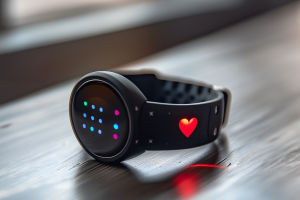Watches have long been more than just tools for telling time—they are style statements, personal accessories, and in many cases, technological companions.
With the rise of smartwatches, a new choice emerges for consumers: should you stick with the classic charm of traditional watches or embrace the high-tech benefits of smartwatches?
This article explores the pros and cons of both to help you decide which timepiece suits your lifestyle and preferences.
The Appeal of Traditional Watches
Traditional watches have stood the test of time for centuries. Their craftsmanship, design, and timeless elegance appeal to those who appreciate classic aesthetics. Many traditional watches are considered collectibles and often hold or increase their value over time. The appeal lies not only in telling time but in making a fashion statement or showcasing mechanical artistry.
One major advantage is the simplicity and reliability of traditional watches. With a battery life that often lasts for years or a mechanical movement that requires winding, they don't need daily charging. Additionally, traditional watches come in a variety of styles—from minimalistic to luxurious—allowing wearers to match their watch to different occasions seamlessly.
The Rise of Smartwatches: More Than Just Timekeeping
Smartwatches represent the fusion of technology and convenience on the wrist. They offer features beyond telling time, such as fitness tracking, heart rate monitoring, GPS, notifications from your phone, music control, and even contactless payments. For those who want to stay connected and health-conscious, smartwatches provide tools that traditional watches cannot match.
A smartwatch's ability to sync with smartphones allows users to receive calls, texts, and app alerts instantly, making it a handy assistant throughout the day. The versatility of apps also means that smartwatches can be customized to fit different needs and preferences, from sports enthusiasts to busy professionals.
Battery Life and Maintenance
One key difference lies in battery management. Traditional watches, especially mechanical or quartz models, can last months or even years without battery replacement or winding. This low maintenance is appealing for those who prefer a hassle-free experience.
On the other hand, smartwatches generally require daily or every-other-day charging, depending on usage and model. This can be inconvenient for users who are often on the go or forget to charge their devices regularly. However, advancements in battery technology are gradually extending smartwatch battery life.
Durability and Wearability
Traditional watches often boast durability, with many models featuring water resistance, scratch-proof crystals, and robust casing materials such as stainless steel or titanium. They are built to last decades if cared for properly. Their physical buttons and mechanical parts also function without digital glitches.
Smartwatches, however, are electronic devices and can be more vulnerable to damage from water, impacts, or screen scratches, despite improvements in rugged designs. Wearability depends on personal comfort—some users prefer the light, sleek feel of a smartwatch, while others favor the classic heft and presence of a traditional timepiece.
Style and Personal Expression
Style is subjective, and here the two types of watches cater to different tastes. Traditional watches offer a vast range of classic designs, from vintage to modern luxury, often seen as status symbols or heirlooms. They are ideal for formal events and settings where elegance and sophistication are prized.
Smartwatches, in contrast, emphasize modernity and functionality. Their digital faces can be changed to match moods, outfits, or occasions. This adaptability appeals to tech-savvy individuals who want their watch to be both practical and expressive in real time.
Cost Considerations
Traditional watches vary widely in price—from affordable quartz models to high-end luxury watches costing thousands. The initial investment can be significant, but many appreciate the longevity and potential resale value. Maintenance costs like servicing mechanical watches should also be factored in.
Smartwatches usually have a lower entry price but may become more expensive over time due to technology upgrades and eventual replacement cycles. Also, some models require subscriptions or paid apps for full functionality, which adds to the long-term cost.
Which Watch Is Right for You?
Choosing between a smartwatch and a traditional watch depends largely on your lifestyle, priorities, and personal taste. If you value timeless style, craftsmanship, and low maintenance, a traditional watch might be your perfect companion. If you prefer multifunctionality, health monitoring, and staying connected, a smartwatch could be the way to go.
Have you experienced the benefits or drawbacks of either type? Feel free to share your thoughts and which watch suits your daily life best!
Final Thoughts
In the end, watches—whether traditional or smart—are about more than just telling time. They reflect personality, meet practical needs, and enhance daily routines. The evolving watch industry continues to innovate, meaning both styles will keep improving. Whichever you choose, your watch should feel like a natural extension of your lifestyle and style.
So, are you team classic or team tech? The choice is yours!


